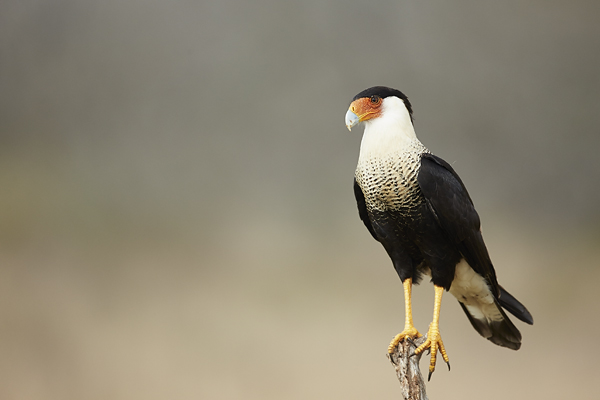If you talk about Texas with most people here in the UK there are a number of things that will probably come to mind initially: cowboys, George Bush, oil, Dallas, JR…. the list goes on in terms of iconic ingredients that make up the story of this, the 2nd largest state in the US both in terms of size and population, but also at times probably the most controversial too. It’s known as the lone star state, part of the deep rooted sense of independence that it still nourishes but when I visited around this time last year there were several stars to be found as far as I was concerned.
One of the many enjoyable parts of my work is the chance to visit new places both for their own sake but also as a rec. for a potential future trip that I might be running, and so it was that hot on the heels of 2 weeks in the wintery conditions of Yellowstone I found myself in the t-shirt surroundings of south Texas, a combination that always makes packing a challenge and arriving at McAllen airport in lined snow boots look just a little out of place.
I was meeting local photographer and guide Ruth Hoyt for a few days introduction to the bird photography ranches that have quietly mushroomed in this corner of the country as the draw of strikingly colourful birds, unique as far as the US is concerned, are to be found. None more so probably than the Green winged Jay.


You can just see the intelligence in that look can’t you? Vivid green wings and an almost superhero like blue and black mask to its face just add to its overall impact.
The reason these unique species are here is simply one of geography: being situated in the far south-west corner of the country and right on the Mexican border of the Rio Grande river sees a number of central American species drifting up and clipping this corner of the country alone.
As you might expect in the big state many species are on the large size – the golden fronted woodpecker (highly spotted black and white wings and bold yellow and red patches on a buff coloured head) simply dwarfs our largest here.


There are some bizarre named ones too – Pyrrhuloxia for instance is as complex a non-Latin bird name I know anywhere but it’s certainly a striking species.

Some are clearly named after just how they look – the iconic male Cardinal is clearly based on the appearance of the Roman Catholic robes associated with that position, although the female is frankly just as spectacular in my view.



Some are named after their behaviour too – the long-billed thrasher does exactly that to the grass and shrubs in search of insects to feed on.

Given that we are in a state of the south it was also apt to come across mockingbirds quite regularly too.


But at a personal level it was the raptors that really drew me in. This is the wild habitat in which to find harris hawk – a common sight at falconry centres across the UK but here surviving in the dry shrub grasslands that these vast ranches now consist of.

Vultures here (often referred to locally as buzzards which can be very confusing) are of the new-world varieties and therefore very different to those in Europe and Africa: there are Black Vultures and Turkey Vultures to be seen with the same prevalence as Common Buzzards are now to be found at home in the UK, although they are maybe not quite as pleasing on the eye.

Then there is the caracara. This is known locally as the Mexican eagle, and is a species I have photographed in southern and Central America before, but it is truly at home in these vast empty ranches surviving on snakes, rabbits, hares and ground dwelling birds such as the highly prevalent northern bobwhite quail (a favourite of the hunting fraternity here in the same way as pheasants at home). They are as uniquely impressive a bird as you can imagine and a real experience to see up close, whether the brightly coloured adults or the more muted but equally distinctive juveniles.




The quail themselves were equally as impressive, scuttling around at breakneck speed, scrambling in the dirt for insects and seed and it was nice to see a game bird in its natural habitat in comparison with the plethora of pheasants we have at home.


The other really enjoyable feature of photographing here is the chance to work on some real old-school style bird photography. Ruth and I had seen the fabulous looking Black-crested Titmouse around at one of the blinds but failed to get an image we were happy with: they are even speedier than long-tailed tits here at home. So we focussed on finding a really nice complimentary perch and trying to encourage the bird to use it for a good couple of hours one evening and after lots of oohs, aahs and near misses the final results were well worth the enjoyable time spent.

So Texas may be a state of controversy and opinion that doesn’t always fit easily with all, but there are pockets of it starting to see that it’s natural resources are worth cherishing, conserving and presenting to a different audience who simply wants to appreciate them in their environment. They and the amazing array of birds that they have on their ranch properties are to be applauded and appreciated as well, and I have indeed pulled a return trip together for next Spring, full details of which can be found here:
Natures Images: South Texas Birdlife
This is truly a mecca for bird photographers – great species, great places to work with them and what a bird that Caracara is! Hope you might be able to join me with the many avian stars of Texas next year.



Fantastic images what camera set up are you using?
These were pretty much all taken on a Canon 1DX and a 500mm lens (the Mk 1 lens at that point in time which I have recently sold and upgraded to the Mk2). Good kit yes but it is my job and as I tell anyone photographing with me whatever your equipment you still need to be able to see the picture!